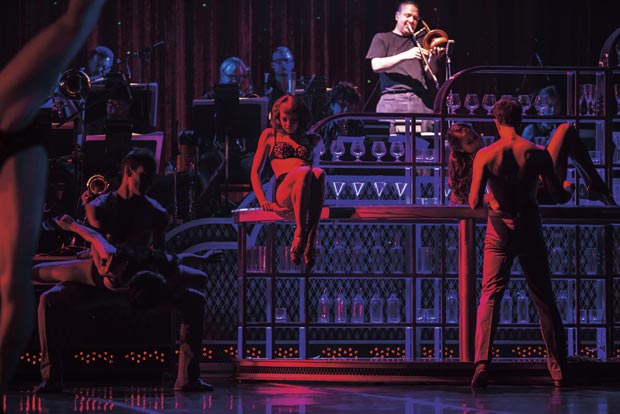
© Costin Radu. (Click image for larger version)
Royal Danish Ballet
Come Fly Away
Royal Danish Ballet School
The Fable Maker (Fabelmageren)
Copenhagen, Royal Theatre
15 October 2013
kglteater.dk
For out-of-Denmark admirers of the Royal Danish Ballet, these are hard times. Short of cash, the company has cut back its repertoire even further this season, and – worse – has arranged it so that the big shows are almost all loaded into the later months. They are putting a huge amount of effort into less formal events – one showcasing the company’s character dancers, another giving opportunities to the current group of aspirants, lots of tasters ranging from an almost-triple bill to brief appearances in the theatre’s cafe, a couple of evenings of work developed by the dancers themselves – but if you wanted something meaty enough to justify an expensive trip, there’s been nothing between the start of the season and Nutcracker but a very long run of Twyla Tharp’s Come Fly Away. And to enjoy that you really, really need to like Frank Sinatra.
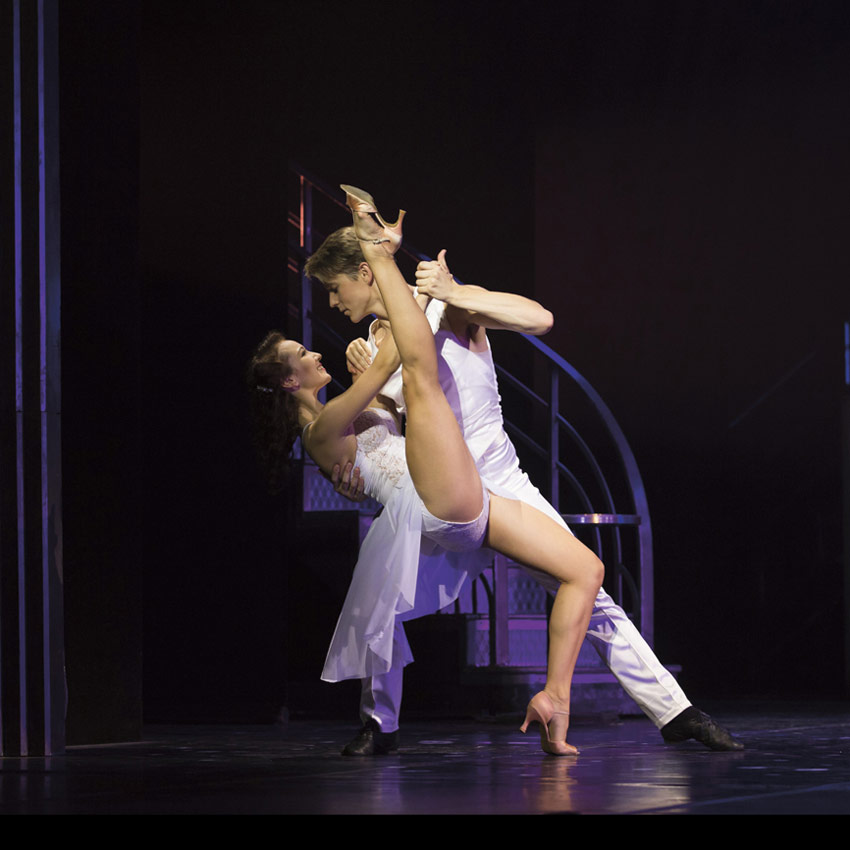
© Costin Radu. (Click image for larger version)
Nine Sinatra Songs is Tharp’s best known work in this genre, made for her own company more than 30 years ago and now a standard modern classic all over the world: Come Fly Away is a much bigger, gaudier affair, the fourth version of a show already seen on Broadway and in Las Vegas, and now danced for the first time by a ballet company. There are 28 Sinatra songs this time, and some instrumental numbers too, and there’s a set – a bar in 1940s New York – and a thread of a narrative and an onstage band playing the accompaniments to Sinatra’s recordings. And assuming that the company acquired the piece in the hopes of selling a lot of tickets and bringing in new audiences, it’s been a terrific success: the whole run is sold out, including an additional performance ‘by public demand’, and I imagine that the standing ovation the night I was there is repeated every time.
The idea is that we follow the development of the relationships of four couples through the evening: the problem is that the characters are stereotypes and their stories predictable, and that such development as there is, is spread much too thinly – anyone coming to Nine Sinatra Songs after seeing this would be astonished by how much drama Tharp can pack into one number when she wants to, as well as by the variety and inventiveness of her choreography. So although it’s wonderfully well lit and the band (led by Danish bassist Chris Minh Doky) sounds great, by the end of the first act I felt I’d seen enough, several times over: fortunately the second half is much more varied and engaging, and by the time My Way rolled round it was hard not to be at least a little bit swept away.

© Costin Radu. (Click image for larger version)
The dancers have to work very hard, though. I saw the first cast and was impressed by how well they’d adapted to an unfamiliar style, apart from some of the more showy posing which didn’t really convince. Top billing is given to the couple whose label might be ‘innocent goofs’ – no surprise that Charles Andersen is cast in this, or that he carries it off so well; his partner, Benita Bünger, is one of the very talented intake from last year, in her first big role and showing plenty of spirited promise. Credit to both of them, too, for keeping their act going through at least one pas de deux more than the joke could really take. The ‘glamour’ couple were Amy Watson and Alban Lendorf: she has the perfect looks for the role – she could have dropped in from any of dozens of Hollywood musicals of the era – while he looks a little less at ease but charms his way through regardless. Maria Bernholdt and Marcin Kupinski had the hardest job – she’s a standard-issue vamp and he’s a loser, and their numbers are much the least memorable.

© Costin Radu. (Click image for larger version)
The big surprise came from the fourth couple, Femke Mølbach Slot and Gregory Dean, as the most emotional and involved pairing. He’s a dancer on the way up at the moment, taking off after several seasons of taxiing; she’s been seen mostly as an ingenue but in this role she redefined her career before our very eyes – it will be so interesting to see what she does next. This couple had one of the two best pieces in the show, a rather sad, resigned, all-passion-spent piece set to One More for the Road; it comes very late in the evening and has an emotional truth which shows up the hollowness of much of the rest. The other outstanding number was Alban Lendorf’s September of my Years – also regretful, melancholy even, and so beautifully done: watching a dancer with this much class and looks and technique, and wonderfully well lit as well, is just unalloyed pleasure.

© Costin Radu. (Click image for larger version)
I heard good things about the second cast, too, and wished I could have managed to see both; but instead I settled for an afternoon watching the Royal Danish Ballet School in their new show for children, The Fable Maker. It’s the brainchild of Shane Brox, a Dane who writes and illustrates children’s books and and also appears on television – his speciality is making toys and so on out of bits and pieces he’s found: think Blue Peter but with a lot more colour and fantasy. For the young dancers he’s created a story with a moral, a modern-day fairy story perhaps, about a boy whose everyday worries turn to nightmares, which he faces down by the power of his imagination. It’s an amazingly clever piece and, for something advertised as suitable for 4-year-olds upwards, quite scary at times: or at least, it frightened me – fortunately most of the children seem to be made of sterner stuff.
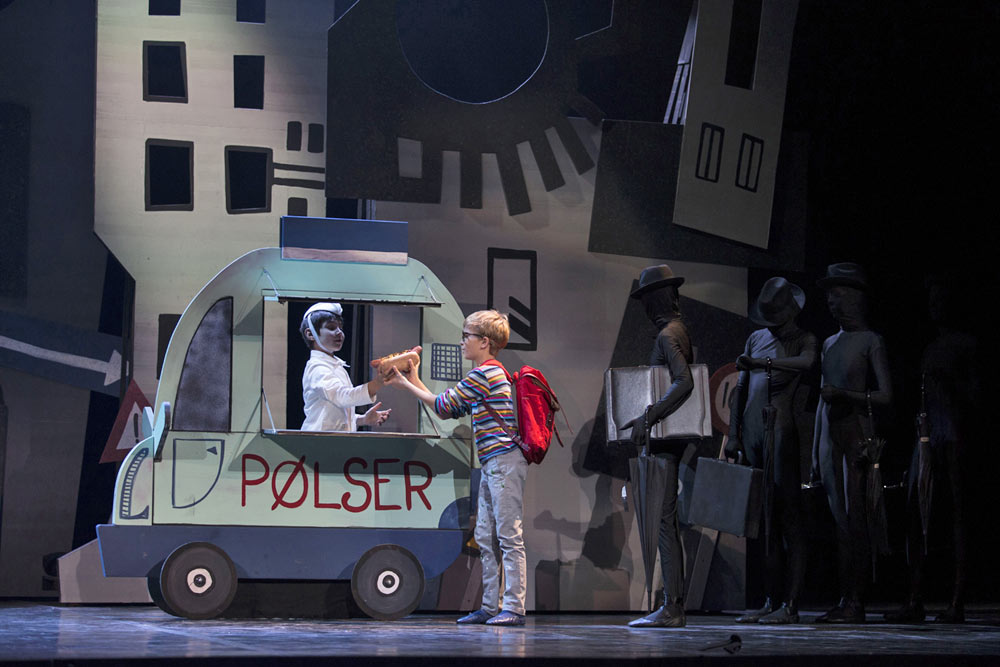
© Costin Radu. (Click image for larger version)
There’s far too much action to describe in any detail – some highlights will give you the idea. The hero, Ferdinand, buys a hot-dog on his way home from school and three older boys steal it from him; in his nightmares they reappear and so do the sausages, in a horrid inversion where the sausages eat children rather than the other way round. Ferdinand gets out of this by conjuring up a giant knife and fork who chop up the leading sausage, who – since this is after all a ballet – later reappears as a ghost-sausage, in a white tutu of course. There’s a rather pretty winter scene, with the smallest children as a corps de ballet of snowballs, and then we encounter the Monster Diva, a huge and very vain green creature whose attempts to capture Ferdinand are set to the Queen of the Night’s first aria from The Magic Flute. And before the happy ending we meet a friendly elephant, thriftily recycled from the recent production of La Bayadère – too complicated to explain why: it’s only a dream.

© Costin Radu. (Click image for larger version)
There’s lots of dance woven into all this, with choreography by company member Esther Lee Wilkinson, and dozens of children from each level in the school get the chance to show what they can do. At the performance I saw Ferdinand was played by Albert Flinth – it’s a big role for an 11-year-old and I thought he was entirely convincing. It must be invaluable experience for him and the rest of them to have a ballet made on them at such an early stage, and a memorable afternoon for their contemporaries in the audience, too. And finally, I will treasure the programme book for a long time: not only can you cut out and glue together your own version of the friendly bee who guided Ferdinand through his dream, you also get instructions on how to make a model of the theatre using the inner tubes from kitchen rolls, and what’s more it’s all written in really easy Danish, for the benefit of small children and foreign critics. Love it.










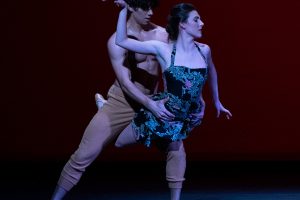

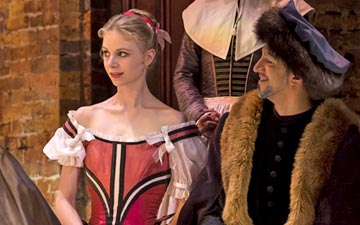

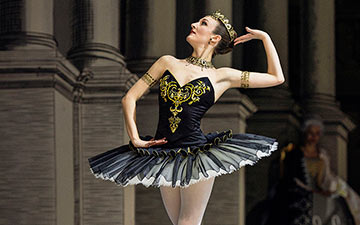
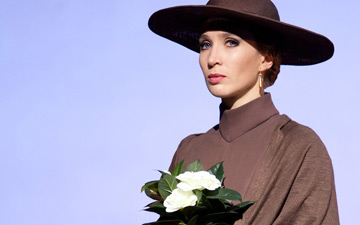

You must be logged in to post a comment.